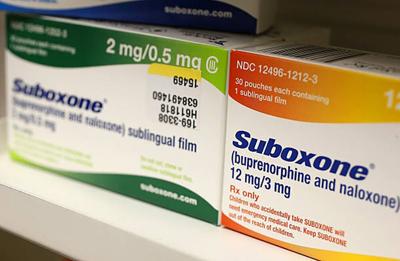By Neita Cecil
Columbia Gorge News
THE DALLES — Thanks to a grant-funded program, Adults in Custody (AICs) at the regional jail can continue medications they’re already taking for substance use disorder — or even start them after entering.
Called Medication-Assisted Treatment (MAT), the program sees an average of 25 people every 90 days, said Nichole Biechler, business manager for Northern Oregon Regional Corrections Facility (NORCOR).
The MAT program started last September, funded by three grants totaling just over $800,000, Biechler said. The funding covers a year of the program.
The medications can reduce cravings for people in recovery, the most common one being suboxone, which itself is a combination of two other medications, buprenorphine and naloxone.
Methadone, a costly alternative for opiod withdrawal, is more tightly controlled and cannot be started by jail medical providers. However, if an AIC is already prescribed methadone, the jail can continue their medication, said NORCOR Nurse Supervisor Cassie Hill, and providers can start an AIC on suboxone.
Sgt. Jason Matthews has worked at the regional jail for 23 years and has seen drug trends evolve, from methamphetamine, to pills like oxycodone, to heroin, and now to fentanyl.
Fentanyl is “10 times worse” than heroin, Matthews said. “It’s actually pretty scary when you’re watching someone come off [fentanyl].”
Giving AICs access to medications is helping improve behaviors “in some aspects,” Matthews said.
He’s seeing “less tensions with some people. It’s not drastic improvements” but it has led to some change. Basically, he said, they’re “less grumpy.”
“We get people that can be in there kicking and yelling and screaming because they’re going through a lot,” he said of the detox process. “That has lessened a little bit.”
“A lot of these people in here, they’re not using drugs for fun, they’re using drugs for coping,” he said.
He asks individuals why they use. “They say ‘Well, I have past trauma and I don’t want to deal with it.’ Instead of getting mental health counseling and/or medications to help deal with this stuff, they turn to drugs.”
He continued, “There’s a few that come through, they want to do better, they just don’t know how. This is opening that door to assisting them in a controlled environment, ‘Hey, this may help you — try it.’”
The three grants were $179,000 from opioid settlement dollars via Wasco County and the City of The Dalles; $290,480 from Pacific Source Health Council; and $337,912 from the Criminal Justice Commission, Biechler said.
The MAT program was actually started to maintain compliance with the Americans with Disabilities Act (ADA), Biechler said. Jails are required to continue medications an individual is on, whether it’s heart medicine or treatment for substance use disorder.
And while it started as a means of adhering to ADA requirements, it was also a matter of “knowing we had such a need for MAT in our community,” Biechler said.
She cited the “exploding need” for help for people facing substance use issues and mental health issues, while the area faces a dire lack of treatment resources.
A stark example that the Gorge is severely under-resourced is a 2024 study by the Oregon Health Authority. Only one area of the state — Hood River, Wasco, Sherman and Gilliam counties — had zero treatment beds for substance use or mental health treatment.
“When you look at that report and you see zeros in every single column for the Gorge area, yes, we stand out for lack of resources,” Biechler said.
The MAT program is labor intensive, Biechler said. AICs taking suboxone have to be watched by a deputy for 15 minutes to ensure the pill dissolves under their tongue, Hill said. That is done to ensure the AIC does not give the pill to someone else.
The medications themselves account for about 20% of grant costs, Biechler said.
Methadone is very expensive, Biechler said, and that is part of the barrier to offering MAT programs in jails. But the jail not only hopes to get more grants to continue the program, it wants to start offering an expensive, but more effective and beneficial injectable form of buprenorphine that lasts a month. Each shot costs $1,700.
Hill said individuals are receptive to starting the MAT program. Immediately upon release, the jail makes an appointment for them to go to One Community Health, a local clinic that also has a MAT program, to continue their treatment. Other sources of community followup include Mid-Columbia Center for Living and HRBR Clinic, which is done via telehealth and is beneficial for non-local residents.
The AICs go to their first appointment, but often don’t go to any more, Biechler said.
The majority of individuals who are on MAT medications are also diagnosed with some type of mental health disorder. “There’s a lot of challenges to go down the road of being clean,” she said.
But, even when people may not follow up with ongoing care, Hill said, “We don’t give up on people.” If they have to restart them on MAT treatment multiple times, that’s what will happen.
“We have so many people in our community that have such heart and passion for this work, but there’s so few resources,” she said, adding the people in the MAT program are “part of our community. Where do they go? That’s what’s still missing.”
Biechler and Hill hope the grant program can continue. “We’re one part of this larger pie — that is hopefully changing people’s lives.”























Commented
Sorry, there are no recent results for popular commented articles.